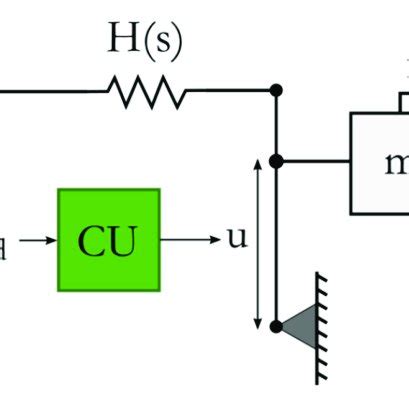What is Impedance Control and Why is it Important?
Impedance control refers to techniques used to manage the impedance of electrical traces on a printed circuit board (PCB) to maintain signal integrity. Proper impedance control is critical in high-speed digital designs to ensure clean, error-free signal transmission.
Some key reasons why impedance control matters:
- Prevents signal reflections and distortions
- Minimizes crosstalk between traces
- Enables higher signal speeds and smaller PCB sizes
- Improves overall system reliability and performance
Without careful impedance control, issues like ringing, overshoot, undershoot, and timing errors can severely degrade signal quality. As digital speeds continue to climb, mastering impedance control techniques becomes increasingly essential for successful designs.
Impedance Control Methods
There are two main approaches to controlling trace impedance on a PCB:
| Method | Description |
|---|---|
| Characteristic Impedance Matching | Designing trace geometry (width, thickness, spacing) to achieve a target characteristic impedance, typically 50Ω or 100Ω. |
| Termination | Adding components like resistors at trace endpoints to match impedance and prevent reflections. |
Both methods aim to maintain a consistent impedance along the length of a trace matched to the source and load impedances. This minimizes discontinuities that lead to signal integrity issues.
H2: 10 Impedance Control Design Tips
H3: 1. Know Your Impedance Targets
Before routing any traces, determine the target impedance for each signal type (clock, data, address, etc.). Common single-ended impedance targets are 50Ω and 100Ω, while differential pairs often aim for 100Ω. Consult your chip datasheets, industry standards, and stackup materials to select appropriate goals.
H3: 2. Design for Controlled Impedance from the Start
Incorporate impedance control requirements into your initial design planning and PCB stackup. Trying to adjust impedance after routing is difficult and error-prone. Calculate trace widths and spacings upfront based on your dielectric heights and constants.
H3: 3. Use a Consistent and Symmetrical Stackup
Maintain a symmetrical stackup, with equal dielectric thicknesses between layer pairs, to ensure consistent impedance across all layers. Avoid mixing core and prepreg materials which have differing dielectric constants. Include dedicated reference plane layers adjacent to high-speed signal layers.
H3: 4. Keep Traces Away from Discontinuities
Route controlled impedance traces away from discontinuities like vias, connectors, and plane edges. Maintain sufficient clearance to prevent impedance variations. When transitioning between layers, use tightly coupled differential vias to minimize impedance changes.
H3: 5. Match Trace Lengths in Buses and Differential Pairs
For parallel buses and differential pairs, match the trace lengths to maintain timing and avoid skew. Unmatched trace lengths can cause misaligned signal edges and bit errors. Use serpentine routing techniques to add length to shorter traces.
H3: 6. Terminate Traces Properly
Select appropriate termination styles and component values for your signal types and speeds. Options include:
| Termination Style | Best for |
|---|---|
| Series | Unidirectional, point-to-point |
| Parallel | Unidirectional, multi-drop |
| RC | Bi-directional, multi-drop |
| Differential | Differential pairs |
Place termination components close to receivers to be most effective. Simulate and verify terminations.
H3: 7. Minimize Crosstalk
Reduce crosstalk between adjacent traces by following best practices:
- Maximize spacing between signal traces
- Route sensitive signals on different layers
- Avoid long parallel runs, especially between fast switching signals
- Stagger trace arrangement to decrease coupling
- Use guard traces or ground pours to isolate critical nets
Analyze crosstalk in your PCB layout tool to identify and correct problems.
H3: 8. Control Return Paths
Provide uninterrupted, low-impedance return paths for high-speed currents by using solid reference planes and stitching vias. Avoid return path discontinuities caused by gaps in planes or missing stitching vias, which can lead to ground bounce issues.
H3: 9. Simulate and Measure Impedance
Perform pre-layout impedance calculations and post-layout simulations to verify your impedance control techniques. Use 3D electromagnetic field solvers for the greatest accuracy, especially with complex structures. After fabrication, measure actual trace impedances with a time-domain reflectometer (TDR).
H3: 10. Work Closely with Your PCB Manufacturer
Communicate your impedance requirements clearly to your PCB fabricator. Provide detailed stackup information, material specifications, and impedance targets. Request impedance testing reports to confirm production boards meet your goals. Understand your manufacturer’s impedance control capabilities and tolerances.

FAQ
What is the difference between single-ended and differential impedance?
Single-ended impedance is the impedance of one signal trace to its reference plane. Differential impedance is the impedance between two traces in a differential pair. Single-ended traces are typically 50Ω or 100Ω, while differential pairs are often 100Ω.
How do I calculate trace width for a target impedance?
Trace impedance depends on the geometry and materials:
- Trace width and thickness
- Dielectric height between trace and reference plane
- Dielectric constant (Er) of the PCB material
Use online calculators, lookup tables, or formulas to determine the required trace width for your dielectric height and Er to achieve your target impedance.
What is the best dielectric material for impedance control?
Materials with consistent Er and low loss are best for impedance control:
- FR-4 is most common, with Er around 4.2 at 1 GHz
- High-speed laminates like Rogers or Isola offer lower Er and loss for improved performance
- Avoid mixing dielectrics in a stackup to maintain consistency
When should I use termination resistors?
Termination is advisable when:
- Trace lengths approach 1/6 wavelength of the signal
- Faster rise times relative to propagation delay
- Impedance discontinuities could cause reflections
- Multi-drop buses where stubs can cause ringing
Simulations can help determine the need for and value of termination components.
How do I verify PCB trace impedance?
Designers can simulate impedance in PCB Tools with integrated 2D field solvers or more accurate 3D electromagnetic simulators. Measure fabricated boards with a time-domain reflectometer (TDR) for the most direct verification of actual trace impedances.
Conclusion
Proper impedance control is essential for signal integrity in high-speed PCB designs. By understanding impedance targets, designing stackups carefully, routing traces wisely, terminating appropriately, and verifying results, designers can avoid issues like reflections, crosstalk, and timing errors. Impedance control requires close attention to detail and collaboration with manufacturers, but the result is cleaner, more reliable signals and overall better system performance.
